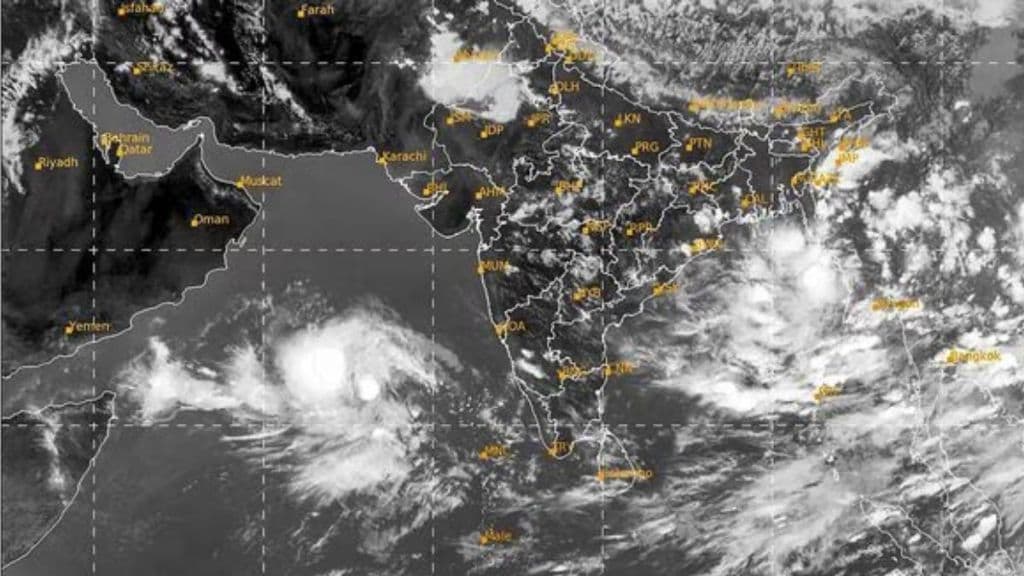A deep depression over the southeast Arabian Sea rapidly intensified into a very severe cyclonic storm ‘Biparjoy’ on late Wednesday night. Cyclone ‘Biparjoy’ is the first storm brewing in the Arabian Sea this year. As the cyclone intensifies into a severe cyclonic storm, the meteorologists have predicted a “mild” monsoon onset over Kerala and “weak” progress beyond the southern peninsula under its influence.
According to the India Meteorological Department (IMD), the very severe cyclonic storm ‘Biparjoy’ would further intensify and move northwards during the next three days. However, the weather department has not predicted any major impact on countries adjoining the Arabian Sea yet.
IMD also stated that Cyclone ‘Biparjoy’ is likely to sustain the strength of a very severe cyclone till June 12, adding that, even though the predicted tentative track of the storm will be in the northward direction, but such systems are known defy the predicted track and the intensity at times.
What does the name ‘Biparjoy’ mean?
The name ‘Biporjoy’ was given by Bangladesh and is a Bangla name that means ‘disaster’. The naming of Cyclone ‘Biparjoy’ was done as per the decree issued by the World Meteorological Organisation (WMO).
How are tropical cyclones named?
The World Meteorological Organisation/United Nations Economic and Social Commission for Asia and the Pacific (WMO/ESCAP) Panel on Tropical Cyclones (PTC) is responsible for naming cyclones. The practice was started in order to ensure quick identification of warning messages because names are presumed to be far easier to remember than numbers or any other technical terms.
Initially, the tropical storms were named arbitrarily, however, the meteorologists later decided to identify these cyclones using names from a list arranged alphabetically. Notably, six such lists are used on a rotational basis, which means, the 2015 list will be used again in 2021.
For the Atlantic and in the Southern Hemisphere (Indian Ocean and South Pacific), a panel of 13 countries, namely India, Bangladesh, Myanmar, Pakistan, the Maldives, Oman, Sri Lanka, Thailand, Iran, Qatar, Saudi Arabia, United Arab Emirates and Yemen, name the cyclones in the region. The cyclone names are given by counties on a rotation basis in the region.
Why are tropical cyclones rising over the Arabian Sea?
Meanwhile, the meteorologists in the latest study ‘Changing status of tropical cyclones over the north Indian Ocean’ have observed that in recent times, due to climate change, cyclonic storms in the Bay of Bengal and the Arabian Sea have been intensifying rapidly and retaining their intensity for a longer duration.
The scientists noted that the frequency, duration, and intensity of cyclones in the Arabian Sea have increased by 40 per cent in the pre-monsoon period and about 20 per cent in the post-monsoon period. Experts also concluded that the number of cyclones in the Arabian Sea has increased by 52 per cent, while very severe cyclones have increased by 150 per cent.
‘Increase in cyclone activity tightly linked to rising ocean temperatures’
Climate scientist at the Indian Institute of Tropical Meteorology, Roxy Mathew Koll, in interaction with the news agency PTI said that the increase in cyclone activity in the Arabian Sea is tightly linked to the rising ocean temperatures and increased availability of moisture under global warming. “The Arabian Sea used to be cool, but now it is a warm pool,” Koll said.
Another professor of the Department of Atmospheric and Oceanic Science, University of Maryland and IIT Bombay, Raghu Murtugudde, said, “The oceans have become warmer already on account of climate change. In fact, a recent study shows that the Arabian Sea has warmed up by almost 1.2 degrees Celsius since March, thus conditions are very much favorable for the rapid intensification of the system (Cyclone Biparjoy) so it has the potential to sustain the strength for a longer period.”

